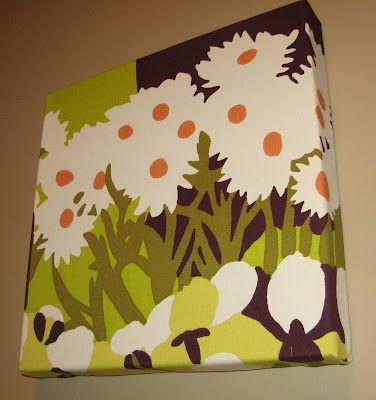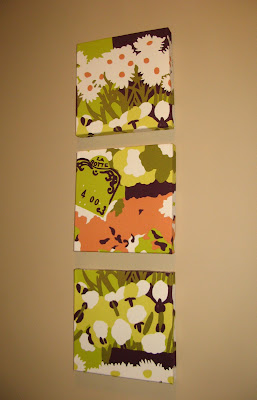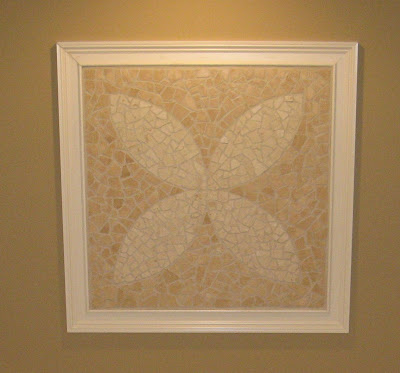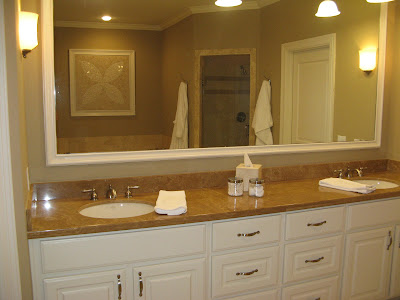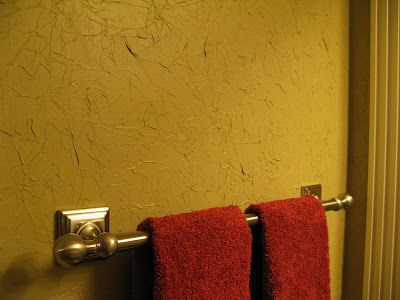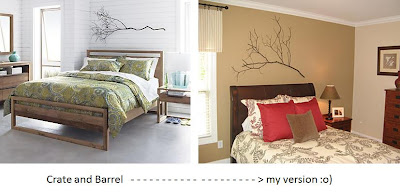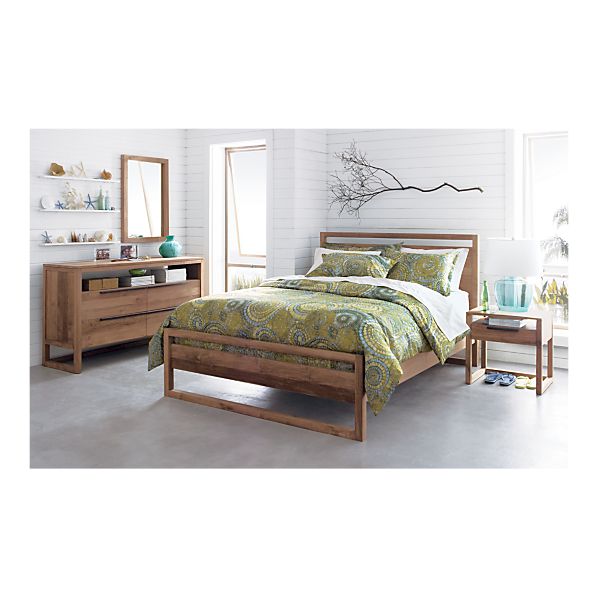I'm excited about the new word I'm adding to my vocabulary - "upcycled". I'm 'up'dating this post (no pun intended) as I think this term applies - taking something you were tired of and no longer have use for, and turning it into something great.
I had several framed pieces of Tuscan landscapes, and was ready for something new. Buying new art seemed like a waste, so I refurbished the existing ones. I covered the Tuscan prints with scrapbooking paper in a faux burlap print (I placed several layers of cardboard underneath to level the paper on the mat, and I used blue painters tape for a temporary hold, just in case I want to go back to the Tuscan prints at a later time.) The focal point in the center is simply fabric around cardboard pieces. The fabric was leftover from the comforter cover I cut up to make pillow shams and a valance for the same room. Total investment was less than $2 for the pieces of scrapbooking paper.
 |
| These are the framed art pieces I started with |
 |
| These are the finished upcyled pieces made with fabric and scrapbooking paper |
 |
| You can see the art pieces on the wall in the guest room... |

